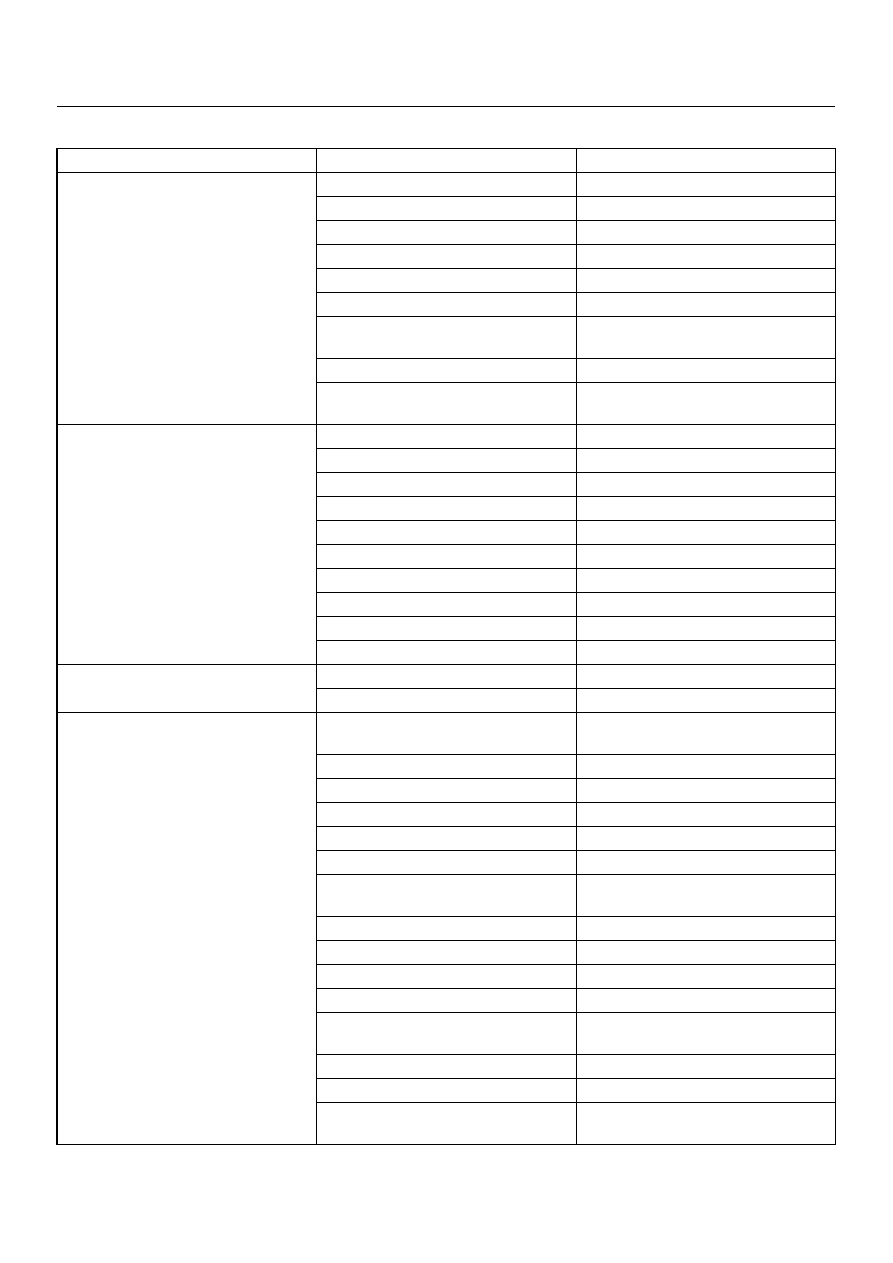Opel Frontera UE. Manual - part 67

WHEEL AND TIRE SYSTEM
3E–3
Diagnosis
Condition
Possible cause
Correction
Vehicle Pulls
Mismatched or uneven tires.
Replace tire.
Tires not adequately inflated.
Adjust tire pressure.
Broken or sagging springs.
Replace spring.
Radial tire lateral force.
Replace tire.
Improper wheel alignment.
Adjust wheel alignment.
Brake dragging in one wheel.
Repair brake.
Loose, bent or broken front or rear
suspension parts.
Tighten or replace the appropriate
suspension part(s).
Faulty shock absorbers.
Replace shock absorber.
Parts in power steering valve
defective.
Replace power steering unit.
Abnormal or Excessive Tire Wear
Sagging or broken spring.
Replace spring.
Tire out of balance.
Balance or replace tire.
Improper wheel alignment.
Check front end alignment.
Faulty shock absorber.
Replace shock absorber.
Hard driving.
Replace tire.
Overloaded vehicle.
Replace tire and reduce load.
Tires not rotated periodically.
Replace or rotate tire.
Worn or loose road wheel bearings.
Replace wheel bearing.
Wobbly wheel or tires.
Replace wheel or tire.
Tires not adequately inflated.
Adjust the pressure.
Wheel Hop
Blister or bump on tire.
Replace tire.
Improper shock absorber operation.
Replace shock absorber.
Shimmy, Shake or Vibration
Tire or wheel out of balance.
Balance wheels or replace tire/or
wheel.
Loose wheel bearings.
Replace wheel bearing.
Worn steering linkage ball joints.
Replace ball joints.
Worn upper or lower end ball joints.
Replace ball joints.
Excessive wheel runout.
Repair or replace wheel and/or tire.
Blister or bump on tire.
Replace tire.
Excessive loaded radial runout of
tire/wheel assembly.
Replace tire or wheel.
Improper wheel alignment.
Check wheel alignment.
Loose or worn steering linkage.
Tighten or replace steering linkage.
Loose steering unit.
Tighten steering unit.
Tires not adequately inflated.
Adjust tire pressure.
Loose, bent or broken front or rear
suspension parts.
Tighten or replace the appropriate
suspension parts.
Faulty shock absorber.
Replace shock absorber.
Hub bearing preload misadjustment.
Adjust preload.
Parts in power steering valve
defective.
Replace power steering unit.